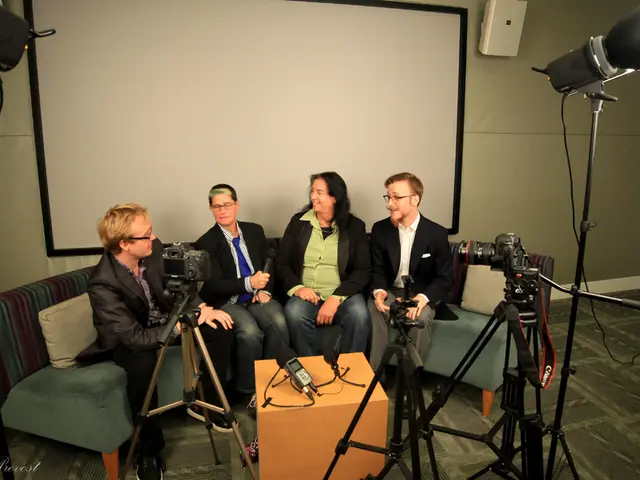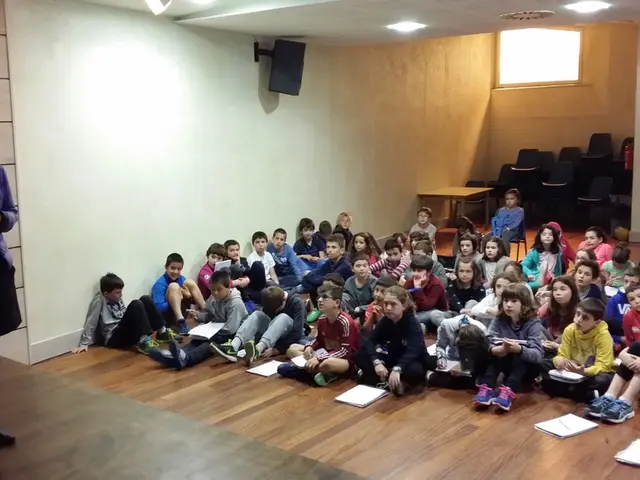Workplace Emoji Usage Linked to Perceived Passive Aggression by Coworkers, According to Study
In the modern digital workplace, the use of emojis has become increasingly common to convey tone and emotions in messages. However, a survey conducted by Glassdoor has shed light on the fact that certain emojis are perceived as passive-aggressive in office communication, particularly the thumbs up, half-smile, and ellipsis emojis [1].
According to the survey, these emojis are often interpreted differently across generational lines, with younger workers (Gen Z) finding them to be low-effort, dismissive, or passive-aggressive [2]. For instance, the thumbs up is seen as a sarcastic response, similar to a "yeah okay whatever" response, while the half-smile emoji can come across as performative or insincere. The ellipsis is often used to signal hesitation or something unsaid, which can be interpreted as passive-aggressive in tone [1].
The survey, which was based on responses from 1,000 workers who have used emojis in their office chats, found that the half-smile emoji was ranked as the most passive-aggressive emoji in the survey [3]. It also revealed that these emojis are difficult to decipher and cause consternation in the workplace.
This generational divide in emoji usage is not surprising, as Gen Zers often use emojis ironically as a way to mock older people for being old [4]. The survey's findings align with the general perception among Gen Zers that emojis can be "cringe" and that they use different emojis than older generations [5].
The use of emojis in workplace communication is causing anxiety for many workers, with 37% of respondents questioning whether their emoji use has come off as intended [1]. Furthermore, the rate of questioning emoji use is higher for Gen Z workers, with 41% expressing such concerns [2].
Interestingly, Glassdoor found that emoji use at work is on the rise, and they found some interesting trends in what emojis have been on the rise in the 2025 workplace. In January, February, and March of 2025, the dead eyes, clown, and red flag emojis were the hottest workplace emojis, respectively [6].
John Sundholm, a writer, editor, and video personality with 20 years of experience in media and entertainment, covering culture, mental health, and human interest topics, notes the importance of being mindful of emoji usage in professional settings. "Caution is advised when using these emojis, as interpretations can vary greatly depending on context, workplace culture, and the generation of the sender and receiver," he says [7].
In conclusion, while emojis can add a playful and informal touch to workplace communication, it is essential to be aware of the potential for misunderstandings and to use them judiciously.
[1] Glassdoor. (2025). The three emojis most commonly perceived as passive-aggressive in office communication. Retrieved from glassdoor.com/emoji-survey
[2] Sundholm, J. (2025). The thumbs up, half-smile, and ellipsis emojis: A guide for professional communication. Retrieved from johnsundholm.com/emojis-in-office-communication
[3] Glassdoor. (2025). The half-smile emoji ranked as the most passive-aggressive emoji in the survey. Retrieved from glassdoor.com/emoji-survey-results
[4] Sundholm, J. (2025). Gen Zers and emojis: A generational divide. Retrieved from johnsundholm.com/gen-zers-and-emojis
[5] Glassdoor. (2025). Gen Zers find emojis to be "cringe" and use different emojis than older generations. Retrieved from glassdoor.com/emoji-generational-divide
[6] Glassdoor. (2025). The hottest workplace emojis of 2025. Retrieved from glassdoor.com/emoji-trends
[7] Sundholm, J. (2025). Being mindful of emoji usage in professional settings. Retrieved from johnsundholm.com/emoji-mindfulness
- John Sundholm highlights the significance of being mindful when using emojis in professional settings, as interpretations can differ significantly based on context, workplace culture, and the generational gap between sender and receiver.
- In workplace communication, the thumbs up, half-smile, and ellipsis emojis are often perceived as passive-aggressive, particularly among younger workers (Gen Z), who tend to view them as sarcastic, performative, or insincere.
- The use of emojis in general news, education-and-self-development, social-media, entertainment, and mental health discussions has evolved, with new trends emerging, such as the popularity of dead eyes, clown, and red flag emojis in 2025's workplace communications.




